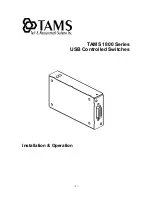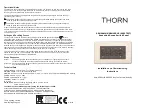
383
PKI configuration
PKI overview
The Public Key Infrastructure (PKI) is a hierarchical framework designed for providing information security
through public key technologies and digital certificates and verifying the identities of the digital certificate
owners.
PKI employs digital certificates, which are bindings of certificate owner identity information and public keys.
It allows users to obtain certificates, use certificates, and revoke certificates. By leveraging digital
certificates and relevant services like certificate distribution and blacklist publication, PKI supports
authenticating the entities involved in communication, and thus guaranteeing the confidentiality, integrity
and non-repudiation of data.
PKI terms
Digital certificate
A digital certificate is a file signed by a certificate authority (CA) that contains a public key and the related
user identity information. A simplest digital certificate contains a public key, an entity name, and a digital
signature from the CA. Generally, a digital certificate also includes the validity period of the key, the name
of the CA and the sequence number of the certificate. A digital certificate must comply with the international
standard of ITU-T_X.509. This document involves local certificate and CA certificate. A local certificate is a
digital certificate signed by a CA for an entity. A CA certificate, also known as a “root certificate”, is signed
by the CA for itself.
CRL
An existing certificate may need to be revoked when, for example, the user name changes, the private key
leaks, or the user stops the business. Revoking a certificate is to remove the binding of the public key with
the user identity information. In PKI, the revocation is made through certificate revocation lists (CRLs).
Whenever a certificate is revoked, the CA publishes one or more CRLs to show all certificates that have
been revoked. The CRLs contain the serial numbers of all revoked certificates and provide an effective way
for checking the validity of certificates.
A CA might publish multiple CRLs when the number of revoked certificates is so large that publishing them
in a single CRL might degrade network performance.
CA policy
A CA policy is a set of criteria that a CA follows in processing certificate requests, issuing and revoking
certificates, and publishing CRLs. Usually, a CA advertises its policy in the form of certification practice
statement (CPS). A CA policy can be acquired through out-of-band means such as phone, disk, and email.
As different CAs may use different methods to check the binding of a public key with an entity, make sure
that you understand the CA policy before selecting a trusted CA for certificate request.
Architecture of PKI
A PKI system consists of entities, a CA, a registration authority (RA) and a PKI repository, as shown in
a
.
Содержание V1910
Страница 1: ...1 HP V1910 Switch Series User Guide 5998 2238 Part number 5998 2238 Document version 2 ...
Страница 85: ...73 c Display the rate settings of ports ...
Страница 102: ...90 a Port traffic statistics ...
Страница 186: ...174 a The MAC tab Click Add in the bottom to enter the page as shown in b b Create a MAC address entry ...
Страница 252: ...240 b The Port Setup tab ...
Страница 260: ...248 d The Port Setup tab ...
Страница 362: ...350 a Ping operation summary ...
Страница 421: ...409 c Configure authorized IP ...
Страница 479: ...467 Index A B C D E F G H I L M O P Q R S T V W ...















































